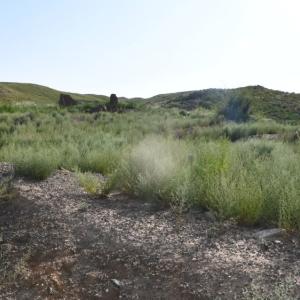Mongolian saiga individuals are fitted with satellite collars
Society
Ulaanbaatar /MONTSAME/ At the initiative of WWF-Mongolia, Wildlife Conservation Society (WCS), Veterinary department of Govi-Altai, Khovd aimag, and Saiga Conservation Network Team have put satellite collars to saiga individuals for a period from 13-21 May, 2017.
The Mongolian saiga is an endangered species, found only in Mongolia. To ensure efficient conservation of the species, scientific researches and studies are inevitably necessary.
The purpose of this effort is to determine whether saiga is developing immunity towards goat plague (peste des petits ruminants), and define saiga population movement during the disease outbreak.
Additionally, it will provide an opportunity to collect baseline data needed for potential re-introduction of the Mongolian saiga. Researchers, who participated in this exercise, reported that a total of 10 individuals of the species were fitted with collars and they took blood sample for the further investigation of the goat plague disease. As planned, the researchers are going to obtain and track data from the collars at least for one year and three months.
As a result of joint conservation efforts of WWF Mongolia with local governments and communities in recent years, the saiga population has been increasing and its population size has reached 13,800 in 2013. Unfortunately due to the goat plague disease during spring of 2017, the species population had been reduced down to 4900 individuals.
The Mongolian saiga is an endangered species, found only in Mongolia. To ensure efficient conservation of the species, scientific researches and studies are inevitably necessary.
The purpose of this effort is to determine whether saiga is developing immunity towards goat plague (peste des petits ruminants), and define saiga population movement during the disease outbreak.
Additionally, it will provide an opportunity to collect baseline data needed for potential re-introduction of the Mongolian saiga. Researchers, who participated in this exercise, reported that a total of 10 individuals of the species were fitted with collars and they took blood sample for the further investigation of the goat plague disease. As planned, the researchers are going to obtain and track data from the collars at least for one year and three months.
As a result of joint conservation efforts of WWF Mongolia with local governments and communities in recent years, the saiga population has been increasing and its population size has reached 13,800 in 2013. Unfortunately due to the goat plague disease during spring of 2017, the species population had been reduced down to 4900 individuals.
source: http://mongolia.panda.org
Kh.Aminaa
Kh.Aminaa

 Ulaanbaatar
Ulaanbaatar











































































